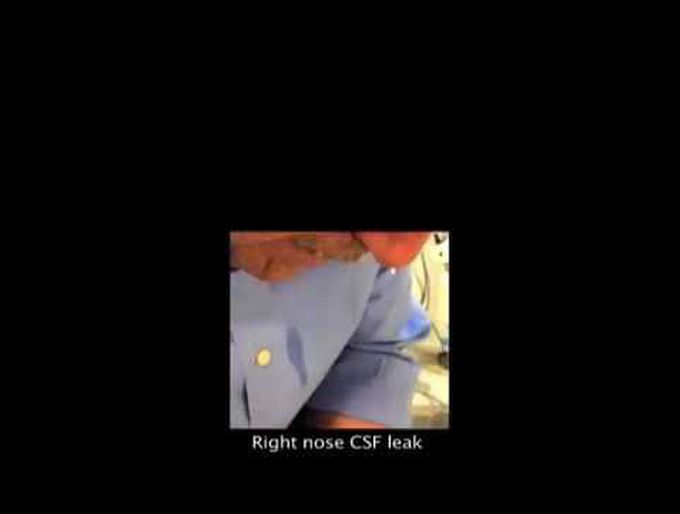


Cerebrospinal Fluid Otorhinorrhea
An 83-year-old man with a history of epilepsy and remote trauma to the head started treatment with continuous positive airway pressure (CPAP) because of sleep apnea. Two months later, he was admitted to the clinic with fever, headaches, and watery fluid dripping from his right nostril. Streptococcal meningitis was diagnosed. Otorhinolaryngologic examination was initially unrevealing, although fluid subsequently collected from the right nostril was positive for beta-trace protein. The patient stated that, during the past 10 years, he had had intermittent watery rhinorrhea from the right nostril. Computed tomography (CT) and magnetic resonance imaging (MRI) of the skull base showed no abnormality. The patient underwent endoscopic evaluation of the anterior skull base, with intrathecal injection of fluorescein dye to identify the source of the leak. However, no defect or fluorescein dye was seen. Two years later, the entire scenario was repeated, and again, no defect or fluorescein dye was identified. The patient was advised not to use CPAP. The next year, the patient again received a diagnosis of streptococcal meningitis and otorhinorrhea of cerebrospinal fluid from the right nostril and right ear. Otoscopy and endoscopy of the right ear revealed a pulsatile eardrum and middle-ear effusion (see video). CT and MRI showed a 5-mm meningocele located at the tegmen tympani. During surgery, intrathecal fluorescein dye was helpful in identifying the meningocele, which was reduced, with subsequent repair of the skull base. The patient remained asymptomatic at 6 months of follow-up.

